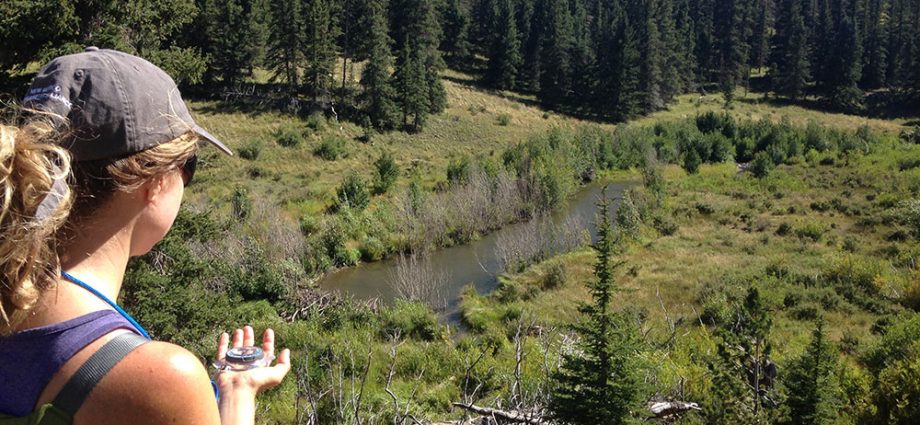You have decided it is a good day for a short hike on a well-known trail. A trail well known to you anyways because you have hiked it numerous times and you know every twist and turn. You know how long it takes from start to finish and you have your survival gear down to a science. You know how many bottles of water you will need as well as number of protein bars. Because you are, so familiar with the terrain a map and compass is just added weight and you see no need to pack then for the hike.
After an hour along the trail, you notice storm clouds gathering and realize it is an hour walk back to the trailhead and your vehicle. Getting soaked out here is not ideal because it is getting cooler so you begin to search for shelter, you veer off the trail, and soon you spot a downed tree that may offer some protection if you get under it.
The rain pelted down for the better part of an hour and the mist rising from the ground made seeing the ground difficult. You set out for the trail and after 10 minutes of hiking you realize you must have went in the wrong direction because surely you did not walk ten minutes to the downed tree. Twenty minutes in the other direction and still no trail and for some reason you have the urge to run in another direction to find the trail, you do not however because panicking is dangerous and it will only move you farther from the trail.
You Are Lost What to Do Next
Like most people, you probably get in your vehicle and drive to your destination. You know the way because of landmarks and street signs. Directions are not given like in days past where someone would tell you to walk north for 800 paces and turn south for 300 more. Frankly you have no idea if the trailhead where your vehicle is, is north or south of the trail and certainly no idea where it is from your current location.
How to Find Civilization
Some people naturally assume a compass is no good unless you know which direction to travel in and that you need a map to find your way. Granted a compass is ideal for finding locations if you know the grid coordinates and know the destination as marked on a map. However, a compass also allows you walk in a straight line.
The bezel of a good compass will have degrees marked on it that correspond to the direction of travel and is lined up with the needle that points in that direction. When walking you glance at the needle to ensure you are always moving 180 degrees south, for example, and this makes it easy to adjust course and of course ensures that you are walking in a straight line.
It is nearly impossible to walk in a straight line without a compass or some visual landmark that you can focus on with your eyes.
Lost Without a Compass
Why is walking in a straight line important. If you cannot walk in a straight line, simply put, you will never get anywhere and ultimately will walk in circles and end up back where you started. You can literally walk for days, be less than five miles from civilization, and never find it because you walked in circles. Hikers, hunters and others lost have been found in some cases just a few miles from camp, their vehicle or a town. They had succumbed to the elements or dehydration because they could not stay pointed in one direction long enough to reach their camp or the town.
Assumedly if you walk in any direction in a straight line for 10 to 15 miles or more in some cases, you will come upon a road, highway or some other evidence of civilization. It is simply a matter of maintaining course, and it can be done with a compass or map.
Find a landmark that you can walk directly to and once there find another and do the same and repeat this process to walk in straight line. Use the sun during the day to maintain course by walking with the sun over one shoulder and once the sun begins to go down either walk into it or have it centered on your back as you walk, which will require that you glance back often to stay on course.
Waterways can lead to towns and homes. Simply follow any river or stream downriver. Many cities and towns grew up around water because water is essential to any community’s survival and many communities sprang up around water.
Railroad tracks either lead to or are coming from a settlement and once you come upon a set of tracks it really does not matter which direction you travel in, one way could have a town just around the corner or several miles around the next corner.
Overhead power lines and oil pipelines will lead to civilization, repair huts, homes and transfer stations where help may be found.
If you know or suspect you are in a coastal area walk into the wind to find the coastline or follow birds. Birds will fly inland and then return to the coast. Prevailing winds blow inland so if the breeze is at your front then you are walking toward the coast where help may be found.


